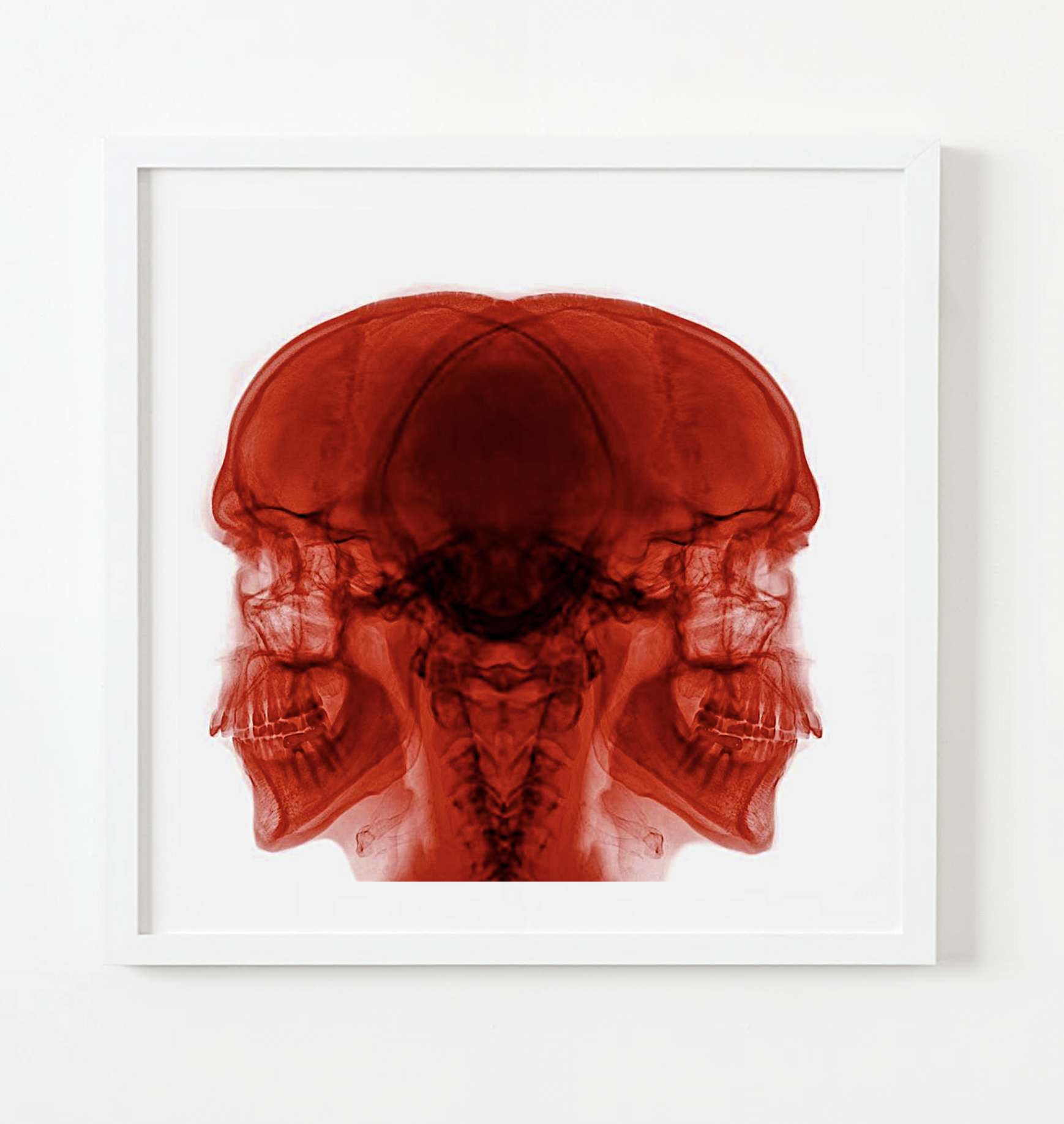

Title: In Balance Forever Photo X-Ray Art Acrylic Print Artist Mike Van Veen
Shipping: $29.00
Artist: N/A
Period: Contemporary
History: N/A
Origin: N/A
Condition: Excellent
Item Date: New
Item ID: 6554
In Balance Forever X-Ray Art, High end acrylic print. The Dutch contemporary artist is specializing in X-Ray Art. Artist Mike Van Veen. All items are currently in a limited edition of 6 pieces (per color). Mike’s sensibilities tend toward the darker side of life. The image or suggestion of The Shadow is present in much of his work; at the same time he confronts the viewer with an invitation to engage. In his own words: “X-ray for me is a way of reshaping the subject from its actual form - Another view on existing design, and creating a new reality - An abduction into another identity” -M. van Veen, 2014 As a child growing up in the Netherlands, Mike van Veen was always interested in photography, films, music and the arts while being very active in sports. After high school, he traveled the world, returning to Holland and eventually began editing tapes for a Dutch music television station. He later attended film school where he honed his camera skills and began directing videos and films while also beginning to paint. It’s this time at the film school that Mike credits with learning how to combine diverse images into a coherent story, one that he has recently perfected with his current “X-Ray Vision” art line. However, it took Mike a trip around the globe doing various projects to realize this potential. In the 1990’s he plunged into the television world as a cameraman. This work took him all over to places as far flung as China, Russia, India, and Afghanistan, working on various productions including sports, drama, music videos and documentaries – often times in precarious and unconventional situations. On the side, he also continued to paint, often in abstract ways. Returning once again to Holland, Mike set up a studio to concentrate on his solo work. After finding a willing Radiologist at a local hospital, Mike started experimenting with the capacities of the X-Ray machine. He soon discovered an endless array of possibilities, moods, ideas and visuals. Later on he tested these designs on high end acrylic prints and the exhibitions soon followed, leading to a successful showing at the Hotel Arena in Amsterdam as well as a collaboration with Dutch architect Piet Boon. * We specialize in high end luxury fine art and collectibles from private estates. - Our job is to find and target great art by collecting a vast array of contemporary, vintage, antique and collectible items from across the globe. Individually handcrafted, we breathe new life into these forgotten relics by giving back each piece it's unique story. We welcome dealers, galleries, and private collectors to register securely and buy with us.
Contemporary Photo X-Ray Art emerged as a unique fusion of science and visual creativity, gaining momentum in the late 20th century as artists began repurposing medical imaging technology for artistic expression. By using X-ray machines to capture the internal structures of everyday objects—ranging from flowers and sea life to mechanical parts and human artifacts—artists revealed hidden layers and delicate forms invisible to the naked eye. These ethereal, skeletal compositions blur the boundaries between biology and design, offering a new perspective on the beauty and complexity of the natural and manmade world. Today, with access to digital X-ray technology and advanced printing methods, artists can manipulate these images to create striking, high-resolution artworks that challenge traditional definitions of photography and fine art.
German physicist Wilhelm Röntgen is usually credited as the discoverer of X-rays in 1895, because he was the first to systematically study them, though he is not the first to have observed their effects. He is also the one who gave them the name "X-rays" (signifying an unknown quantity) though many others referred to these as "Röntgen rays" (and the associated X-ray radiograms as, "Röntgenograms") for several decades after their discovery and even to this day in some languages, including Röntgen's native German.
X-rays were found emanating from Crookes tubes, experimental discharge tubes invented around 1875, by scientists investigating the cathode rays, that is energetic electron beams, that were first created in the tubes. Crookes tubes created free electrons by ionization of the residual air in the tube by a high DC voltage of anywhere between a few kilovolts and 100 kV. This voltage accelerated the electrons coming from the cathode to a high enough velocity that they created X-rays when they struck the anode or the glass wall of the tube. Many of the early Crookes tubes undoubtedly radiated X-rays, because early researchers noticed effects that were attributable to them, as detailed below. Wilhelm Röntgen was the first to systematically study them, in 1895.
Early research
Both William Crookes (in the 1880s) and German physicist Johann Hittorf[citation needed], a co-inventor and early researcher of the Crookes tube, found that photographic plates placed near the tube became unaccountably fogged or flawed by shadows. Neither found the cause nor investigated this effect.
In 1877 Ukrainian-born Ivan Pulyui, a lecturer in experimental physics at the University of Vienna, constructed various designs of vacuum discharge tube to investigate their properties. He continued his investigations when appointed professor at the Prague Polytechnic and in 1886 he found that sealed photographic plates became dark when exposed to the emanations from the tubes. Early in 1896, just a few weeks after Röntgen published his first X-ray photograph, Pulyui published high-quality X-ray images in journals in Paris and London. Although Pulyui had studied with Röntgen at the University of Strasbourg in the years 1873–75, his biographer Gaida (1997) asserts that his subsequent research was conducted independently.